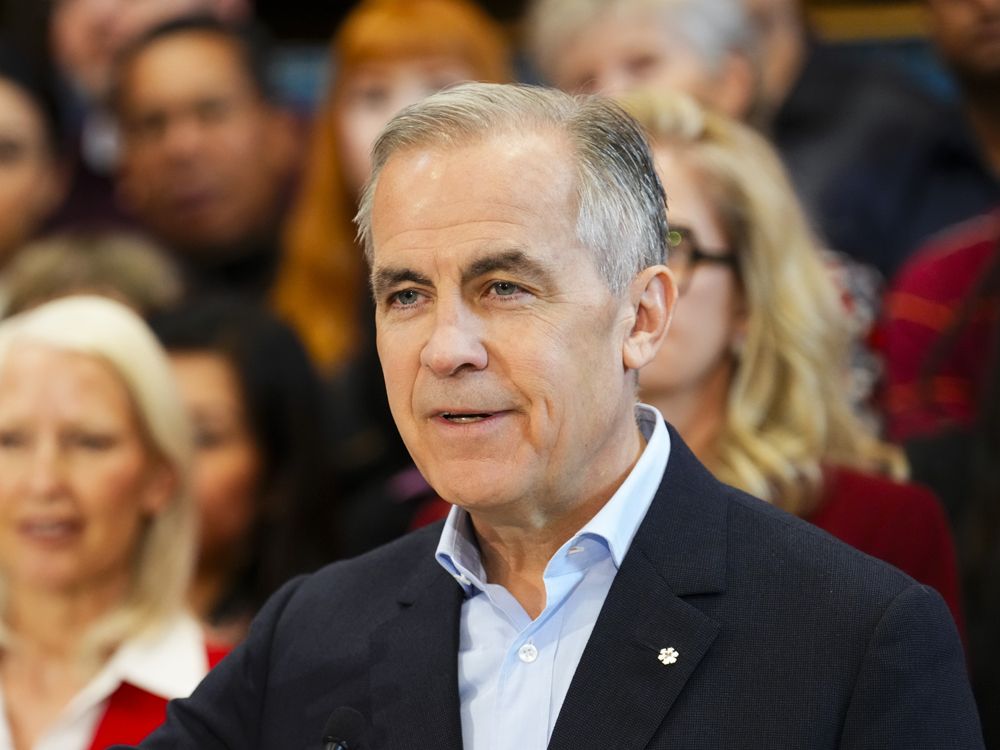U.S. price pressures could embolden Canada’s central bank to move more aggressively to fight inflation, economists say
Article content
If the U.S. economy sneezes, Canada could catch a cold. That’s what economists are wary of as they look over this week’s U.S. consumer price index readings and consider how they might push the Bank of Canada to get tougher in its fight against inflation.
Advertisement 2
Article content
While the growth of U.S. CPI slowed in August to an annualized pace of 8.3 per cent, down from 8.5 per cent in July, price pressures still clocked in hotter than economist expectations of 8.1 per cent. The release sent stocks plunging the most since 2020 and have prompted economists on both sides of the border to revise their rate-hike expectations for the rest of the year, with some predicting interest rates will move north of the four per cent mark.
Article content
“Hotter U.S. inflation that drives aggressive Fed tightening and weakens (the Canadian dollar) is likely to motivate the Bank of Canada to have greater confidence to shoot past four per cent with its policy rate,” wrote Derek Holt, head of capital markets economics on the Bank of Nova Scotia’s economics team, in a Sept. 13 note. Holt added that coupled with Canadian fiscal stimulus, which Scotiabank has argued is adding fuel to the cost-pressure fire, the economic data out of the U.S. could embolden Canada’s central bank to move more aggressively to fight inflation.
Advertisement 3
Article content
“The (Bank of Canada) is likely to be dragged along by the Fed with domestic fiscal stimulus reinforcing the likelihood that the policy rate breaches four per cent by December if not October,” Holt wrote.
Economists at the Toronto-Dominion Bank also revised their rate-hike expectations this week, moving estimates for the terminal rate — the maximum rate the central bank is expected to hit in its rate-hiking cycle — from 3.5 per cent to four per cent in their base-case assumption. In a Wednesday note to clients, TD chief Canada strategist Andrew Kelvin noted that a terminal rate as high as 4.75 per cent was also plausible.
How inflation trends play out at home, will no doubt influence the Bank of Canada’s next move. Headline inflation figures for July dropped below the eight per cent mark to an annualized pace of 7.6 per cent, largely due to falling gasoline prices. August CPI figures for Canada are expected next week.
Advertisement 4
Article content
Wage growth is another piece of the puzzle that could lead to faster rate hikes. Senior deputy governor Carolyn Rogers told reporters last week that this was one of the factors the Bank would be keeping a close eye on as employees ask for higher wages or pursue higher paying jobs to keep pace with the rising cost of living. However, she warned the run-up in wages could trigger a wage-price spiral and cause inflation to become entrenched.
Royce Mendes, managing director and head of macro strategy at Desjardins, pointed out this dynamic in a Sept. 14 note to clients, using U.S. wage-growth data (since Canadian figures don’t go back far enough in time) to illustrate how each wage run-up period was swiftly cut off following a recession. To avoid the “nightmare scenario” of wages causing high inflation to become the norm, Mendes said the Bank has little choice but to aim for a recession.
Advertisement 5
Article content
“The only sure-fire way to contain that risk is to fly a kamikaze mission,” Mendes wrote. “Looking at U.S. wage data … it’s clear that recessions can break the cycle.”
Mendes added that the odds of a recession in the U.S. have “increased markedly” and Fed officials would be less inclined to pump the brakes on the current rate-hiking cycle anytime soon.
“In a typical environment, Canada might be able to avoid a recession if the U.S. were to enter into only a mild downturn,” Mendes said. “However, with central bankers north of the border continuing to aggressively hike interest rates, that’s a dim prospect today.”
Advertisement 6
Article content
Mendes is currently expecting a 3.75 per cent terminal rate, though said it was very possible the economists at Desjardins may have to boost it depending on inflation data and the degree of hawkishness emerging from the central bank.
TD chief economist Beata Caranci told Larysa Harapyn in a Sept. 8 interview it was possible the Bank of Canada would have to move even higher than the U.S. Federal Reserve, citing a tighter job market, more resilient consumer and large savings buffers.
“Canada is certainly on the upper end of what we’re seeing from some major peers (with a 3.25 per cent policy rate),” Caranci said. “I would also say that it’s quite possible that we will have a Bank of Canada that has to hike to a higher level than what you are going to see out of the U.S., and I think a lot of Canadians might get thrown by that because we tend to look to the U.S. as a barometer of what to expect in Canada, but we do have a much tighter labour market than they do in the U.S.”
• Email: shughes@postmedia.com | Twitter: StephHughes95
Advertisement
U.S. inflation could push Bank of Canada to move rate higher than 4%
2022-09-14 20:58:51






